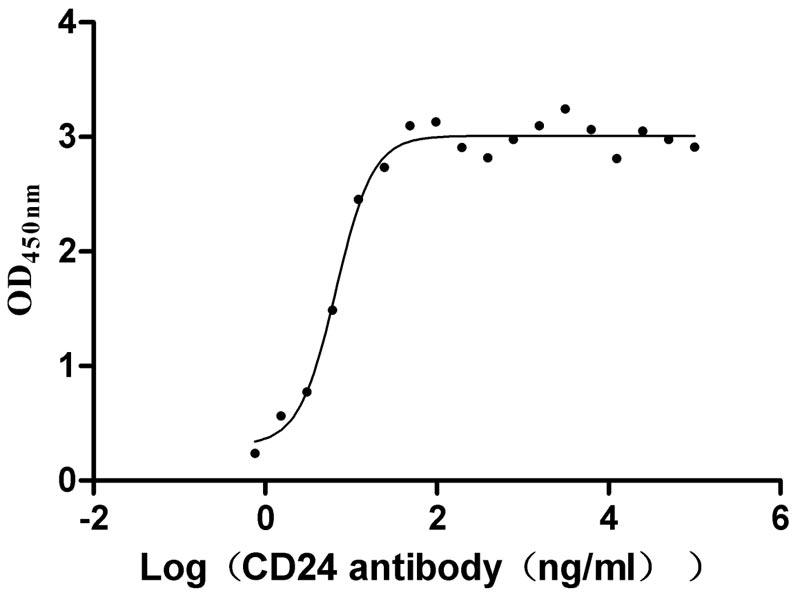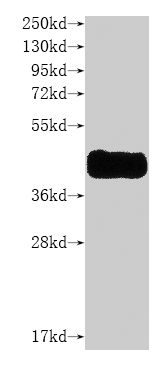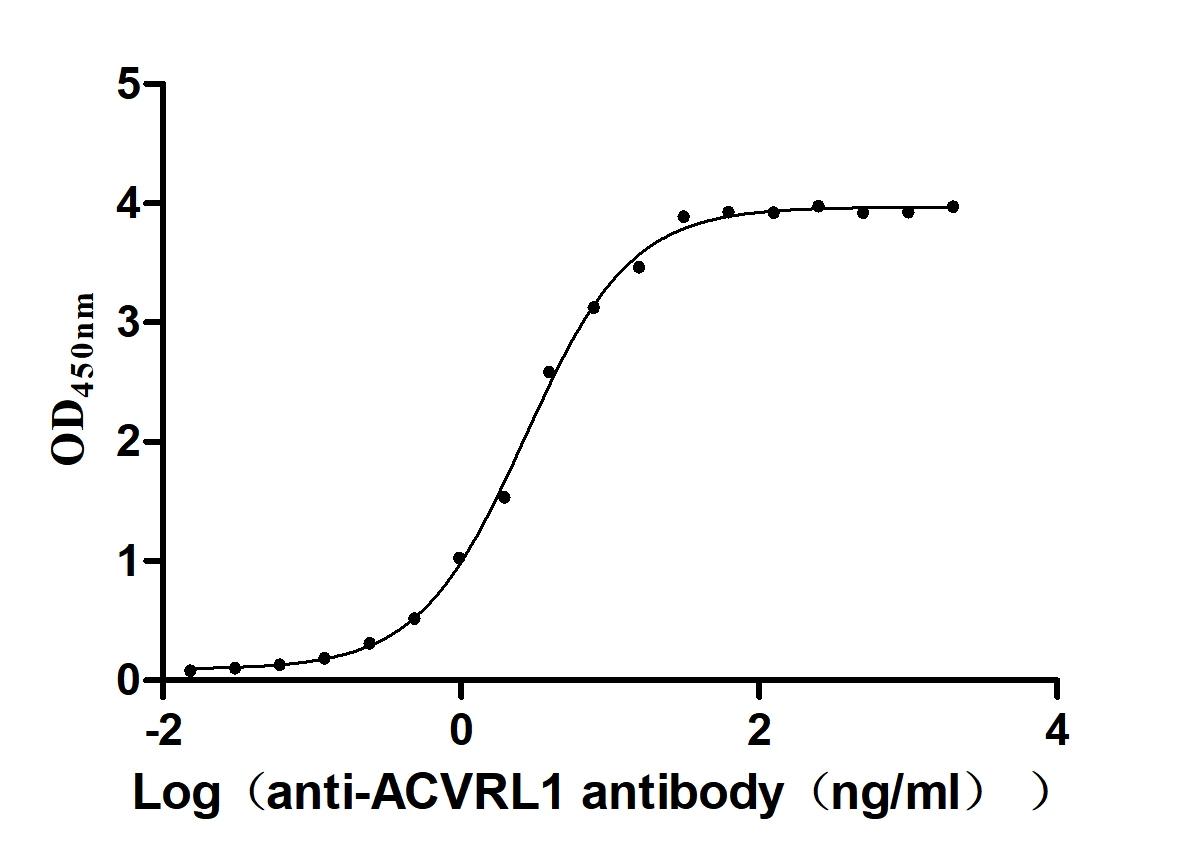Recombinant Mouse Thioredoxin reductase 1, cytoplasmic (Txnrd1)
-
中文名稱(chēng):小鼠Txnrd1重組蛋白
-
貨號(hào):CSB-YP884960MO
-
規(guī)格:
-
來(lái)源:Yeast
-
其他:
-
中文名稱(chēng):小鼠Txnrd1重組蛋白
-
貨號(hào):CSB-EP884960MO
-
規(guī)格:
-
來(lái)源:E.coli
-
其他:
-
中文名稱(chēng):小鼠Txnrd1重組蛋白
-
貨號(hào):CSB-EP884960MO-B
-
規(guī)格:
-
來(lái)源:E.coli
-
共軛:Avi-tag Biotinylated
E. coli biotin ligase (BirA) is highly specific in covalently attaching biotin to the 15 amino acid AviTag peptide. This recombinant protein was biotinylated in vivo by AviTag-BirA technology, which method is BriA catalyzes amide linkage between the biotin and the specific lysine of the AviTag.
-
其他:
-
中文名稱(chēng):小鼠Txnrd1重組蛋白
-
貨號(hào):CSB-BP884960MO
-
規(guī)格:
-
來(lái)源:Baculovirus
-
其他:
-
中文名稱(chēng):小鼠Txnrd1重組蛋白
-
貨號(hào):CSB-MP884960MO
-
規(guī)格:
-
來(lái)源:Mammalian cell
-
其他:
產(chǎn)品詳情
-
純度:>85% (SDS-PAGE)
-
基因名:Txnrd1
-
Uniprot No.:
-
別名:Txnrd1; Trxr1; Thioredoxin reductase 1; cytoplasmic; TR; EC 1.8.1.9; Thioredoxin reductase TR1
-
種屬:Mus musculus (Mouse)
-
蛋白長(zhǎng)度:full length protein
-
表達(dá)區(qū)域:1-613
-
氨基酸序列MPVDDCWLYF PASRGRTFVQ TVWVAPTCPN CCWFPGFLPP VPRPPHVPRV LLRGPRGAVL PASRPSKTLP SSSQTPCPTD PCICPPPSTP DSRQEKNTQS ELPNKKGQLQ KLPTMNGSKD PPGSYDFDLI IIGGGSGGLA AAKEAAKFDK KVLVLDFVTP TPLGTRWGLG GTCVNVGCIP KKLMHQAALL GQALKDSRNY GWKVEDTVKH DWEKMTESVQ SHIGSLNWGY RVALREKKVV YENAYGRFIG PHRIVATNNK GKEKIYSAER FLIATGERPR YLGIPGDKEY CISSDDLFSL PYCPGKTLVV GASYVALECA GFLAGIGLDV TVMVRSILLR GFDQDMANKI GEHMEEHGIK FIRQFVPTKI EQIEAGTPGR LRVTAQSTNS EETIEGEFNT VLLAVGRDSC TRTIGLETVG VKINEKTGKI PVTDEEQTNV PYIYAIGDIL EGKLELTPVA IQAGRLLAQR LYGGSNVKCD YDNVPTTVFT PLEYGCCGLS EEKAVEKFGE ENIEVYHSFF WPLEWTVPSR DNNKCYAKII CNLKDDERVV GFHVLGPNAG EVTQGFAAAL KCGLTKQQLD STIGIHPVCA EIFTTLSVTK RSGGDILQSG CUG
-
蛋白標(biāo)簽:Tag?type?will?be?determined?during?the?manufacturing?process.
The tag type will be determined during production process. If you have specified tag type, please tell us and we will develop the specified tag preferentially. -
產(chǎn)品提供形式:Lyophilized powder
Note: We will preferentially ship the format that we have in stock, however, if you have any special requirement for the format, please remark your requirement when placing the order, we will prepare according to your demand. -
復(fù)溶:We recommend that this vial be briefly centrifuged prior to opening to bring the contents to the bottom. Please reconstitute protein in deionized sterile water to a concentration of 0.1-1.0 mg/mL.We recommend to add 5-50% of glycerol (final concentration) and aliquot for long-term storage at -20℃/-80℃. Our default final concentration of glycerol is 50%. Customers could use it as reference.
-
儲(chǔ)存條件:Store at -20°C/-80°C upon receipt, aliquoting is necessary for mutiple use. Avoid repeated freeze-thaw cycles.
-
保質(zhì)期:The shelf life is related to many factors, storage state, buffer ingredients, storage temperature and the stability of the protein itself.
Generally, the shelf life of liquid form is 6 months at -20°C/-80°C. The shelf life of lyophilized form is 12 months at -20°C/-80°C. -
貨期:Delivery time may differ from different purchasing way or location, please kindly consult your local distributors for specific delivery time.Note: All of our proteins are default shipped with normal blue ice packs, if you request to ship with dry ice, please communicate with us in advance and extra fees will be charged.
-
注意事項(xiàng):Repeated freezing and thawing is not recommended. Store working aliquots at 4°C for up to one week.
-
Datasheet :Please contact us to get it.
靶點(diǎn)詳情
-
基因功能參考文獻(xiàn):
- Study in transgenic mice finds that T-cell activation is linked to a drastic downregulation of Txnip and an increase in Txn1/Txnrd1 expression, which is absolutely required for synthesis of 2'-deoxyribonucleotides during T-cell metabolic reprogramming. Txnrd1 is critical for expansion of the activated T-cell population during viral and parasite infection. PMID: 29749372
- These results suggest that TrxR1 suppresses anabolic metabolism and adipogenesis by inhibition of intracellular signaling pathways downstream of insulin stimulation. PMID: 27346647
- TrxR1 represents a novel therapeutic target to prevent oxygen-mediated neonatal lung injury through Nrf2. PMID: 27089175
- The results demonstrate that DATS protects against oxidative stress-induced DNA damage and apoptosis in C2C12 cells in part through the activation of Nrf2-mediated TrxR1 induction via the ERK signaling pathway. PMID: 28218609
- Collectively, our results suggest that MsrA protects hepatocytes from APAP-induced cytotoxicity through the modulation of TXNRD1 expression. PMID: 28442342
- Considering the variable expression levels of Sep15 and TR1 found within the human population, our results provide insights into new roles of selenoproteins in cancer PMID: 25886253
- Augmentation of GSH systems by TrxR1 inhibition could represent a promising therapeutic approach to attenuate oxidant-mediated lung injury and improve patient outcomes. PMID: 24295151
- Because the N-terminal domain of Sepp1 has a thioredoxin fold, Sepp1(UF) were compared with full-length Sepp1, Sepp1(Delta240-361), and Sepp1(U40S) as a substrate of thioredoxin reductase-1 (TrxR1). PMID: 24434121
- Sec-containing TrxR1 is absolutely required for self-sufficient growth of MEFs under high-glucose conditions, owing to an essential importance of this enzyme for elimination of glucose-derived H2O2. PMID: 24853413
- The exaggerated TrxR release to serum upon liver injury may reflect more complex events than a mere passive release of hepatic enzymes to the extracellular milieu. PMID: 24608031
- TrxR1-deficient cells are more sensitive to TNF-alpha induced apoptosis than control cells. PMID: 24039713
- Txnrd1-null livers did not have more effective gene expression responses to APAP challenge; however, their constitutive metabolic state supported more robust GSH biosynthesis, glutathionylation, and glucuronidation systems PMID: 23743293
- TR1 protects against chemically induced hepatocarcinogenesis via the control of the cellular redox state, whereas its role in promoting this type of cancer is minimal PMID: 22791808
- new role for TR1 in cancer that is independent of Trx reduction and compensated for by the glutathione system PMID: 22594686
- TR1 down-regulation is important in maintaining high levels of reactive oxygen species (ROS) under hypoxic conditions and HIF stabilization and activity do not require hypoxic generation of ROS. PMID: 22348009
- hepatocyte proliferation in vivo requires either glutathione (GSH) or at least one functional allele of txnrd1, demonstrating that either the GSH- or the TrxR1-dependent redox pathway can independently support hepatocyte proliferation during liver growth. PMID: 22198266
- results reveal TR1 as both a regulator and a regulated target in the macrophage gene expression network PMID: 21943784
- Data show that genetic ablation of Txnrd1 has no apparent effect on tumor cell behavior based on similar proliferative, clonogenic, and tumorigenic potential. PMID: 21045148
- in hepatocytes, Txnrd1-independent route can fully support DNA replication and cell proliferation PMID: 20571049
- Txnrd1 plays an essential role during embryogenesis in most developing tissues except the heart. PMID: 15713651
- TGR and GPx4 can serve as a novel disulfide bond formation system and contain a catalytic selenocysteine consistent with the role of selenium in male reproduction PMID: 15901730
- Txnrd1 was required for correct patterning of the early embryo and progression to later development. PMID: 17697936
- Bach1 repression of ferritin and thioredoxin reductase1 is heme-sensitive in cells and in vitro and coordinates expression with heme oxygenase1, beta-globin, and NADP(H) quinone (oxido) reductase1. PMID: 17901053
- TR1 is critical for self-sufficiency in growth signals of malignant cells PMID: 17971875
顯示更多
收起更多
-
亞細(xì)胞定位:Cytoplasm.
-
蛋白家族:Class-I pyridine nucleotide-disulfide oxidoreductase family
-
數(shù)據(jù)庫(kù)鏈接:
Most popular with customers
-
Recombinant Human Hepatocyte growth factor receptor (MET), partial (Active)
Express system: Mammalian cell
Species: Homo sapiens (Human)
-
Recombinant Human Tumor necrosis factor ligand superfamily member 8 (TNFSF8), partial (Active)
Express system: Mammalian cell
Species: Homo sapiens (Human)
-
Recombinant Human Delta-like protein 3 (DLL3), partial (Active)
Express system: Mammalian cell
Species: Homo sapiens (Human)
-
Recombinant Human Insulin growth factor-like family member 1 (IGFL1) (Active)
Express system: Mammalian cell
Species: Homo sapiens (Human)
-
Recombinant Human Poliovirus receptor (PVR) (I340M), partial (Active)
Express system: Mammalian cell
Species: Homo sapiens (Human)
-
Recombinant Human Signal transducer CD24 (CD24)-Nanoparticle (Active)
Express system: Mammalian cell
Species: Homo sapiens (Human)
-
Recombinant Human C-C chemokine receptor type 8 (CCR8)-VLPs (Active)
Express system: Mammalian cell
Species: Homo sapiens (Human)
-
Recombinant Human Serine/threonine-protein kinase receptor R3 (ACVRL1), partial (Active)
Express system: Baculovirus
Species: Homo sapiens (Human)


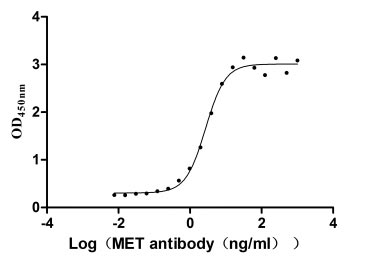
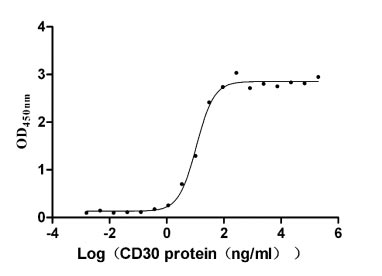
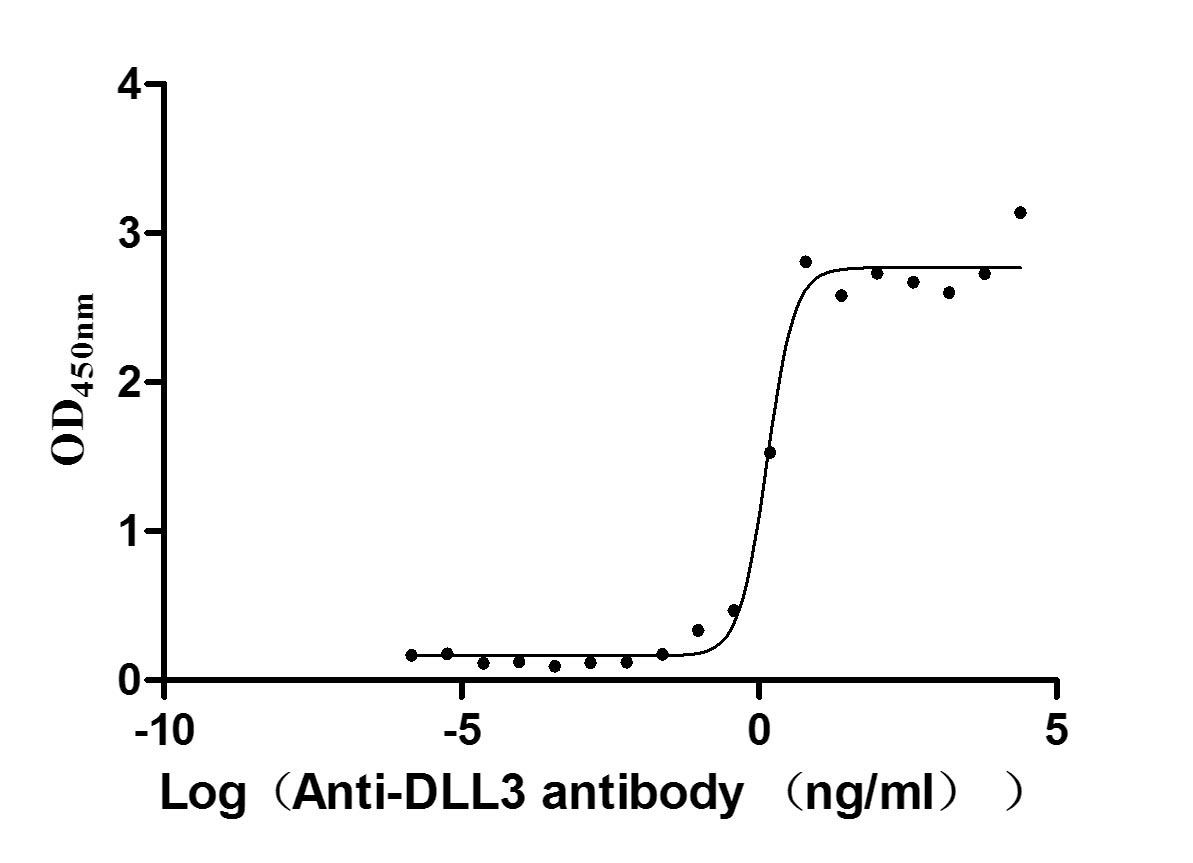
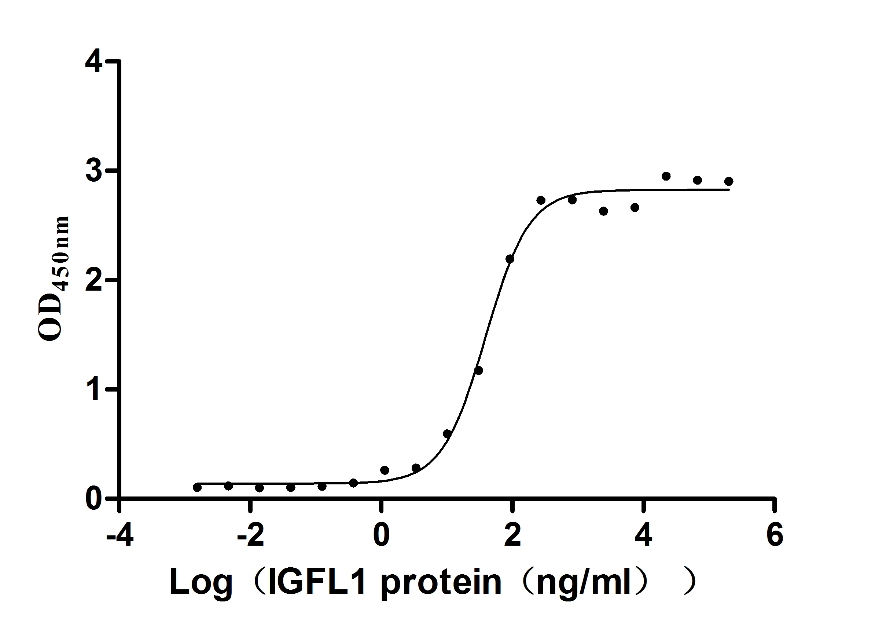
-AC1.jpg)
